Why do I go cruising? This was only my second cruise, and my partner has booked a third, to Iceland. So why? I spent nearly 20 years driving thousands of miles through Europe, Southern Africa and the States reviewing hotels for my online magazine, after a previous 20 years involved in the design of hotels from 2 up to 5 stars nationally. The age profile of the cruise line clients says it all really – they take no-one under 50 and I approach my 77th birthday in January ’24. Where I was happy to cruise the motorways for hundreds of miles, the increasing traffic and my increasing age means I find covering the distances much more physically demanding than it was – the days of being the only car on a new autobahn in eastern Germany are, alas, long gone. So now I eat sleep and drink as the landscape is rolled past my frustrated view.
It is a new ship, built in a German yard as British capitalists and governments alike saw no reason to maintain the largest shipping fleet/navy/ship building industry in the world, preferring to spend the money on wine women and song as Britannia sinks gently beneath the waves, taking native Britons down into relative poverty again. Last time I looked about 25 new cruise ships a year hit the oceans – none of course built in Britain as our incompetent managerial class was too busy partying – even RN boats are built partially in South Korea or Spain. As I no longer review hotels having written about well over 1,000 properties and been involved on the design of over 200 others, I am not going into detail of the design of the ship, but I am amazed that considering the average age of clients is older than me, how poorly the design works for the less able.
At a societal level cruising is big business. Even the old East German State ran a cruise ship to take comrades on holiday to friendly socialist states – exciting! When my cruise pulled into Cadiz there were two other cruise lines present. Typically, whilst the UK ship was full of pensioners, the German and American ships were party boats. Taken together with a total of some 7,000 passengers and 2,500 crew I ran a quick thumb over what they paid into the Cadiz economy in 24 hours. Harbour fees, food, and alcohol (both supplies to the ships and consumed by the tourists in shore cafes), the employment of dozens of tour buses, drivers, guides, the shoppers – well taken altogether maybe €2million injected into the local economy in one November day. I bet few English ports take advantage of this floating bounty.
I was staggered by the number of people for whom this was their fifth, sixth or seventh cruise this year. One admitted they would only be home a week before leaving again for a Christmas Cruise. The cruise line I went with is all inclusive, that is you pay your ‘fare’ and everything thereafter is provided – food, drink including wines etc., accommodation, many on-shore excursions, theatre entertainment on board (yep it had a professional theatre). Some claim it is cheaper than staying in an old people’s home – except medical service are extra, but then so are many NHS services these days.
Our cabin would be OK in a mid-market 4 star and had a balcony so just bearable for a 3-week cruise although the space was tight. My partner had picked somewhere we were unlikely to have gone to otherwise, the Cape Verde islands, over 2,000 miles south. Across the Bay of Biscay, in winter… so off we went to fantasy islands.
Fantasy is sunshine and calm seas. Last time going up the North Sea, waves covered our porthole on occasion. Here as we left Pompey, the balcony furniture was lashed down securely (the British Fleet similarly lashed down by scaffold poles, I noticed). A sister ship had been battered by storms, and it seemed we could expect the same. To my disappointment it was a boring unspectacular four days of sea that failed to give us any drama to break the boredom of being served endless good food and drink as the waves went by. If I was to drown it was more likely to be in a barrel of wine than the briny it seemed. Or explode through overindulgence.
Walking the plank was more about following the boardwalk around the ship, four laps to a mile. Did one and a half turns, eagerly looking out to see the sea, and more sea, grey Biscay sea, white tipped grey sea, sea hiding in squalls, light playing on the sea. Water, water, everywhere, enough to drive you to drink. Waves! Splashing along at 15knots, looking at the progress map to see where we are, at sea. What did you expect, you are on a cruise!? So, first lesson, you have to enjoy being entertained, join the bridge card gang, have plenty of good books, or like looking at the sea. The sea at dawn. The sea at dusk. The sea breaking, the sea sullen, oleaginous sea, rippling sea, sea in the rain. Sea – sorry – see what I mean. Four days all at sea.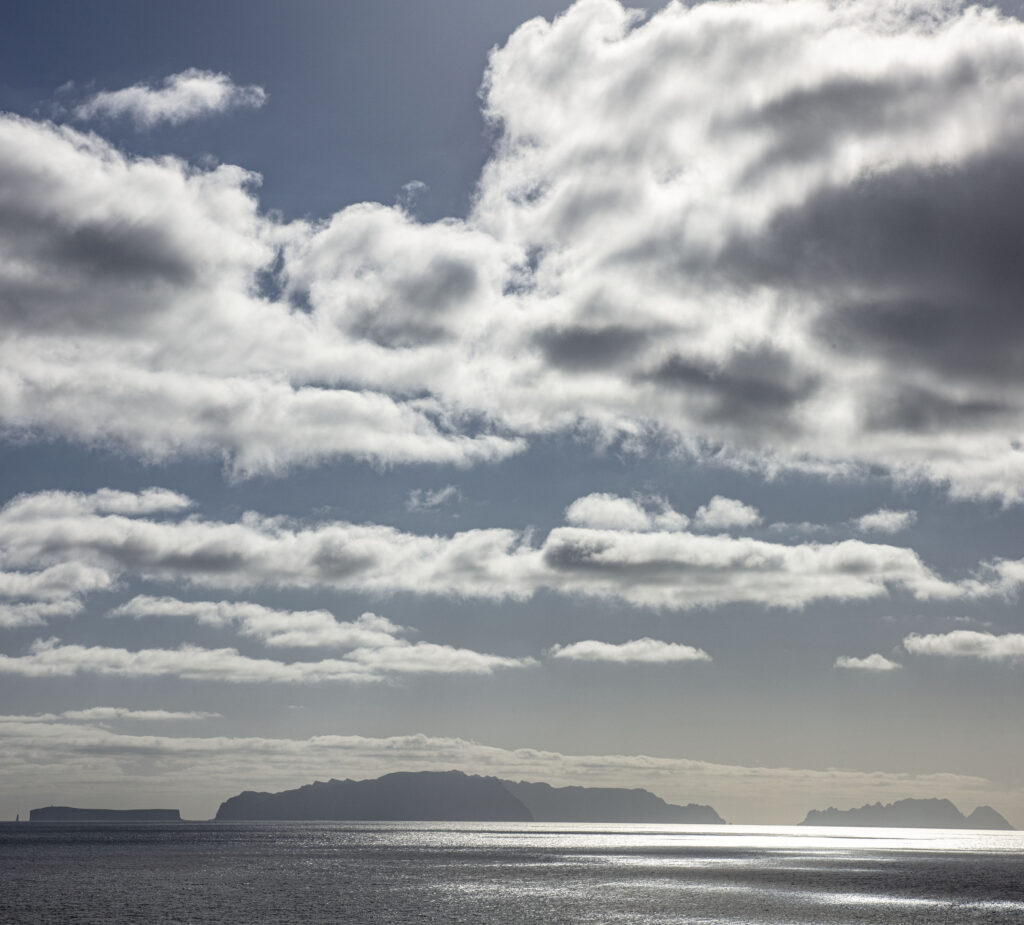
Then an island. Which one is it? Does it matter – its foreign and not sea. Something different to see. Its warmer too, but it is still northern hemisphere in late autumn, so all things are relative, gritters may be on the road at home but here temperatures are in double figures. Just. Doesn’t matter on the ship, it is all air conditioned, which makes sure all the bugs get circulated…Escape ashore in Funchal, sophisticated Madeira, colourful, “it must have a market” she says eagerly, it also has a live volcano which we drive out to see, still emitting. Noticeably it has no potholes. Amazing that with the volcanic ash still at 200 degrees they have already a new road across it and no potholes. I suppose you could call a volcano a weird example of a pothole. If you are going to have just the one, then make it a big’un! Still emitting hot gasses too (used to be called smoke when I were a lad, now ‘emissions’).
The sea now changing colour. Porpoises, dolphins even the odd whale is spotted along with different boobies – nah, seabirds, this is a SAGA cruise not the Riviera. Sunsets reward the balcony sitters and islands arrive on the horizon at regular intervals as we sweep the Canaries – and yes I even snapped an image of a feathered canary, although not on the birdwatching trip, which was more about long bus rides for little avian watching time, although some rare avians were spotted. Cape Verde reminded of Cape town back streets, existing mainly off tourism, with apparently 20% of GDP being from remittances sent home by Cape Verdeans resident abroad.
San Sebastián on Gomera, home to Columbus, was charming. We saw volcanic craters, great forests, all off roads without a pothole in sight. Undoubted star of the islands was the charm of Lanzarote, notwithstanding the developments of very commercial Tenerife. Not my first visit to Lanzarote, and I wrote previously about their hero and a model for developers everywhere, Cesar Manrique. The capital Arrecife was delightful, its boat basin for local boats (not the yotties harbour) providing both visual delight and bird life, the scale and nature of the architecture making for a welcoming comfortable town that it was a real pleasure to visit, very liveable. The café we had a drink in had Manrique’s image on the wall, claiming to be his ‘local’ but then I imagine most bars in Arrecife do the same…
The journey north was broken by following the coast of Portugal, calling at Cadiz and Corunna on the way. Enjoyed Cadiz but Corunna’s famed crystal wall was just a street of glazed in balconies in a vaguely depressing industrial town. At least it wasn’t another four days of nothing but sea before the light house on the White Isle was blinking and Pompey and the Navy’s scaffolded warships hove in sight. Disembarked to face a long arc of dark suited chauffeurs waiting to collect passengers – ours a stand-out red clad pixie with a big smile. Wonderful to be going home – and Pompey’s terminal so much better than the worn-out bricks of Dover.
So cruising is partially an answer to ageing immobility, and OH had booked another in 2024 to Iceland, in summer. Something to look forward to?

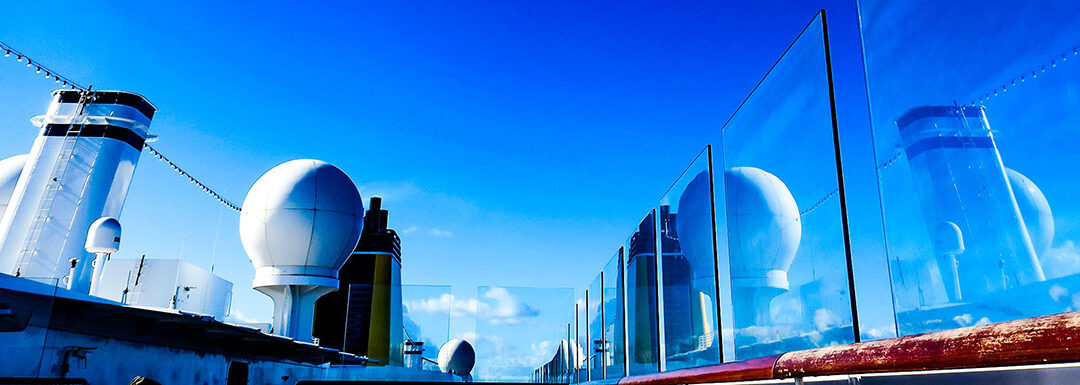
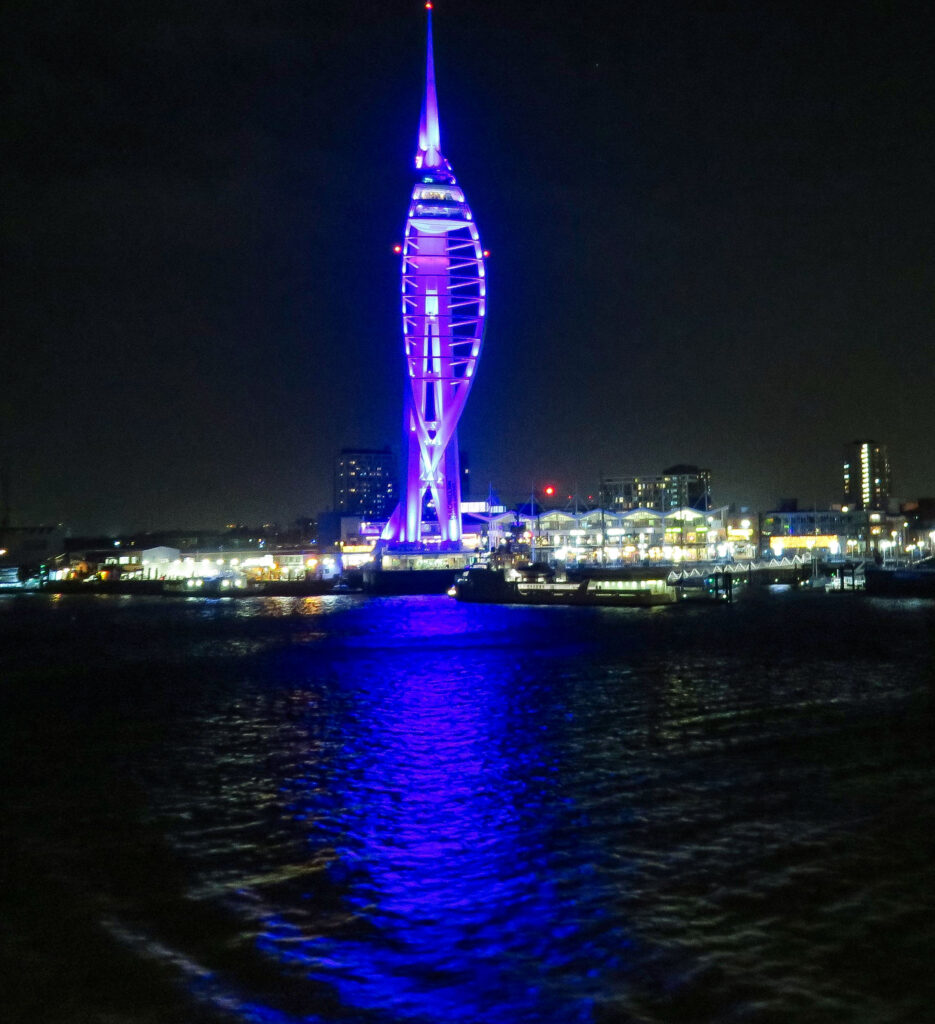
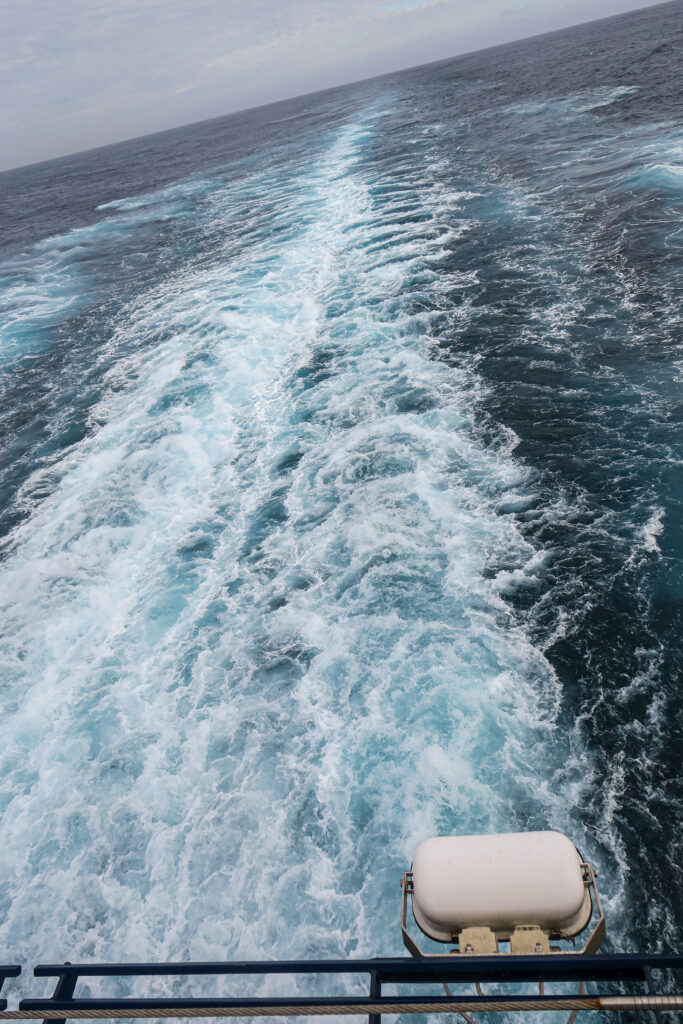
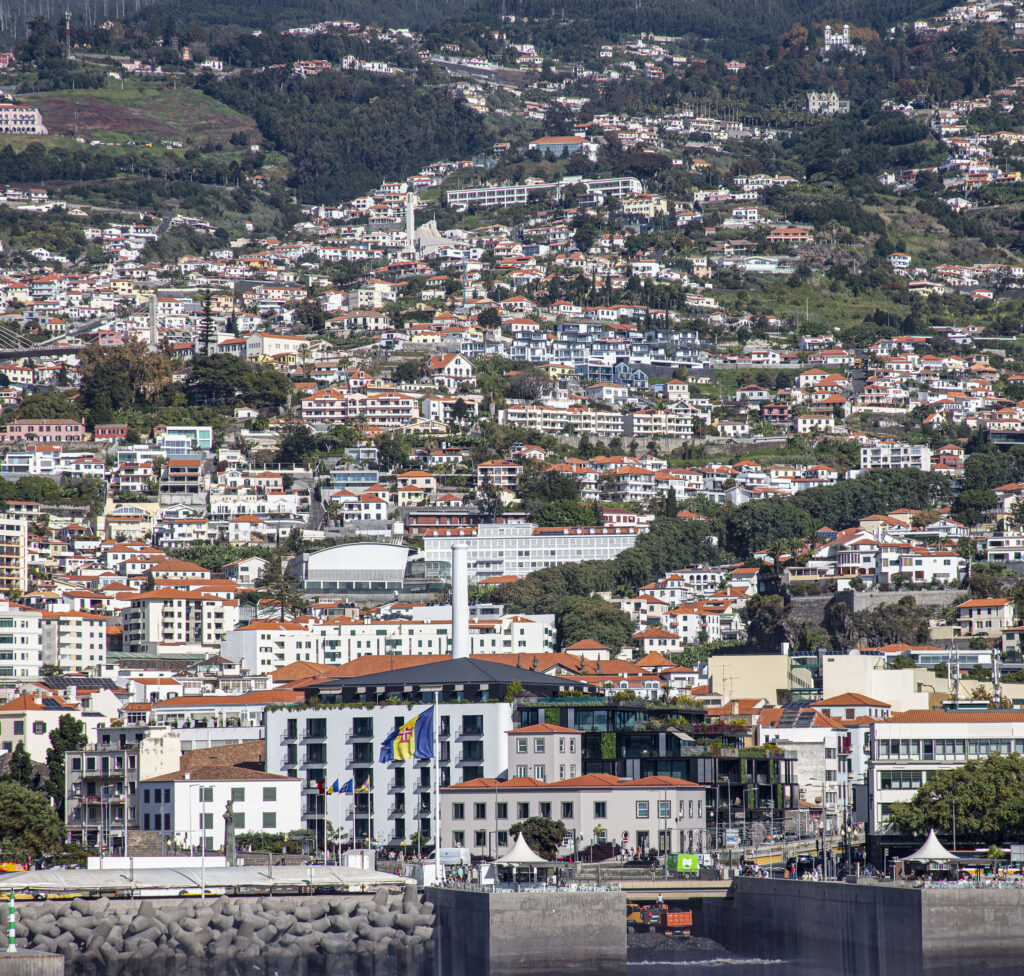
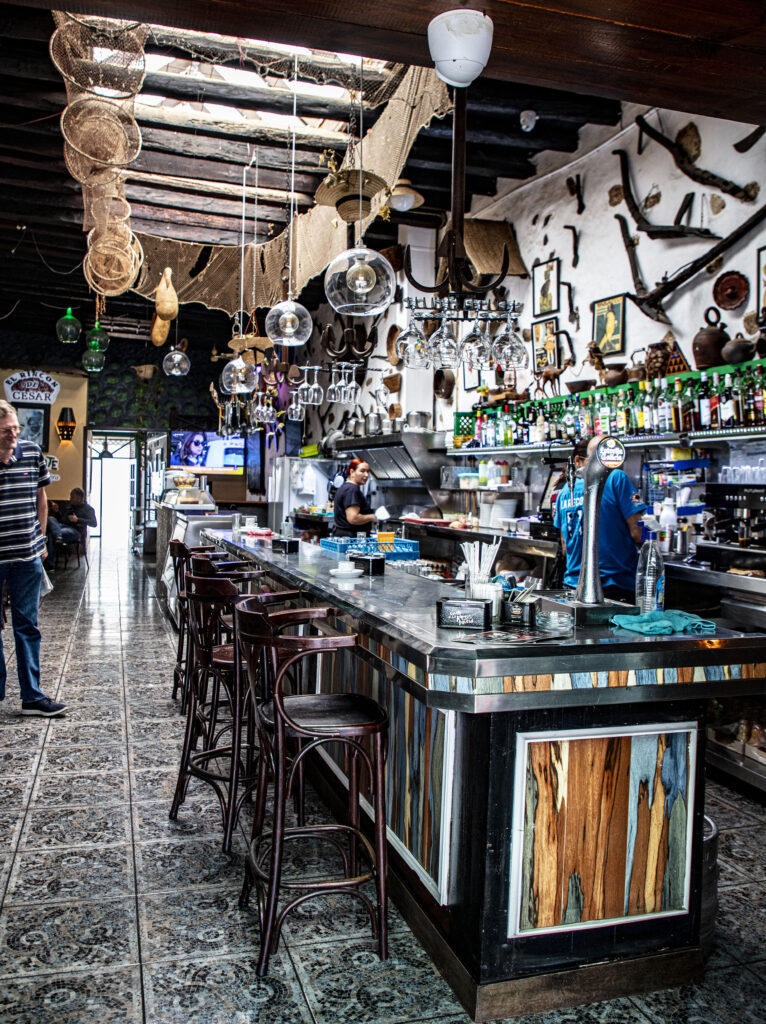
Recent Comments